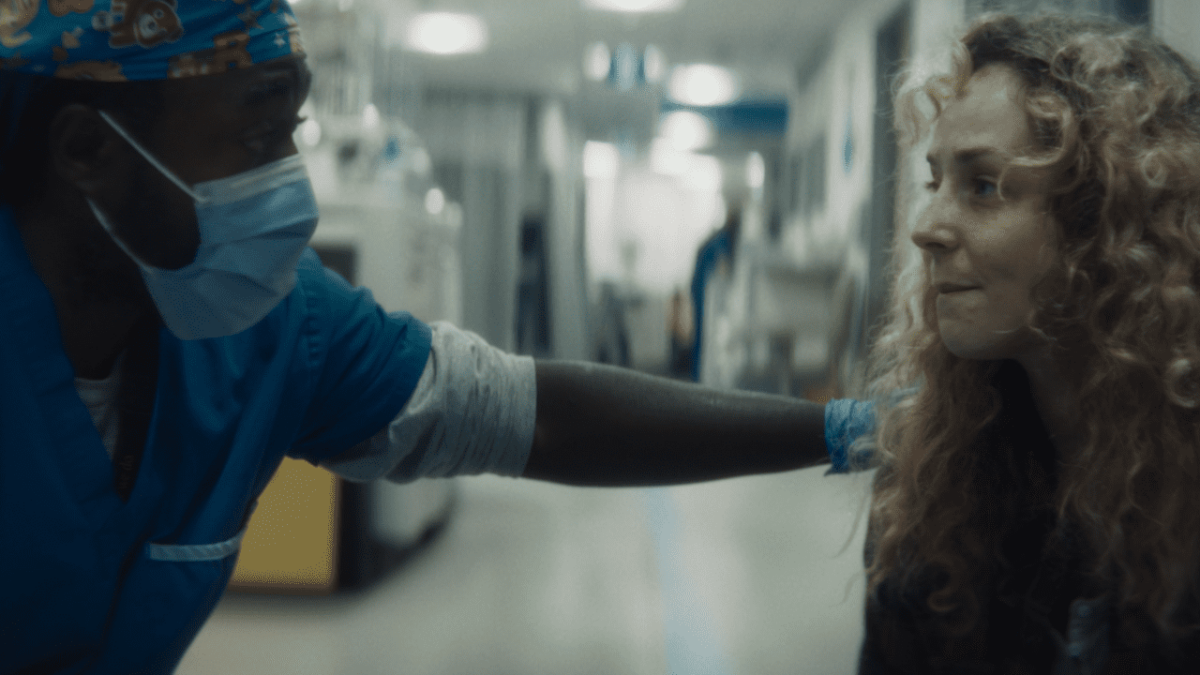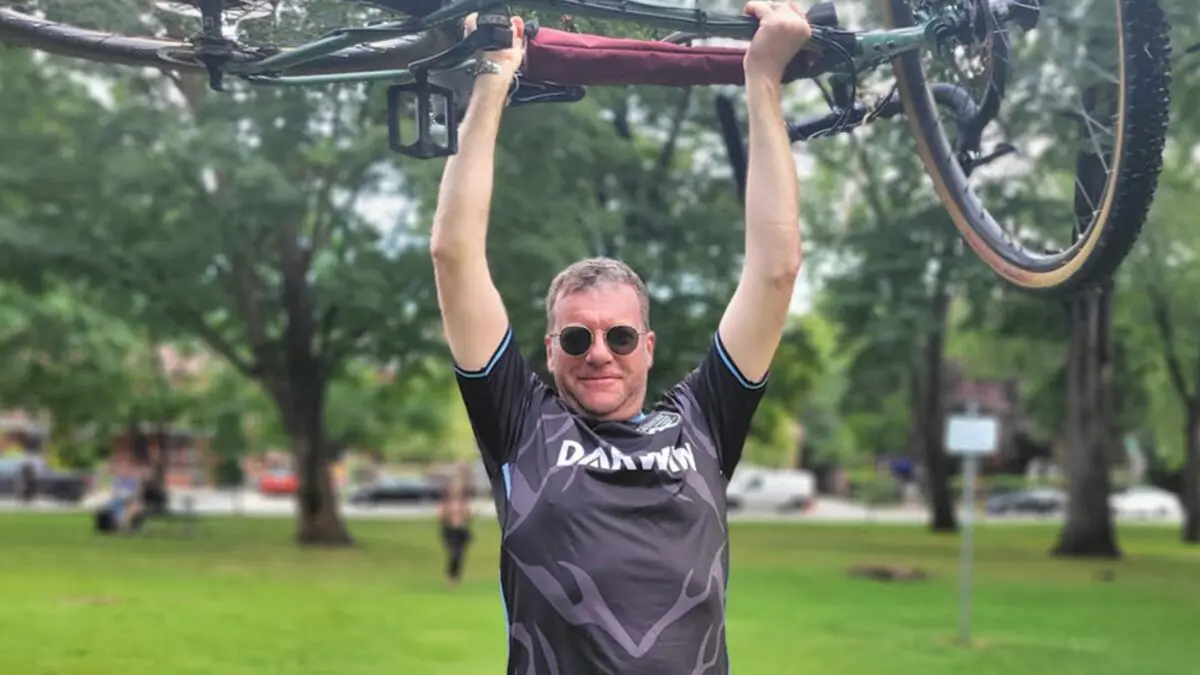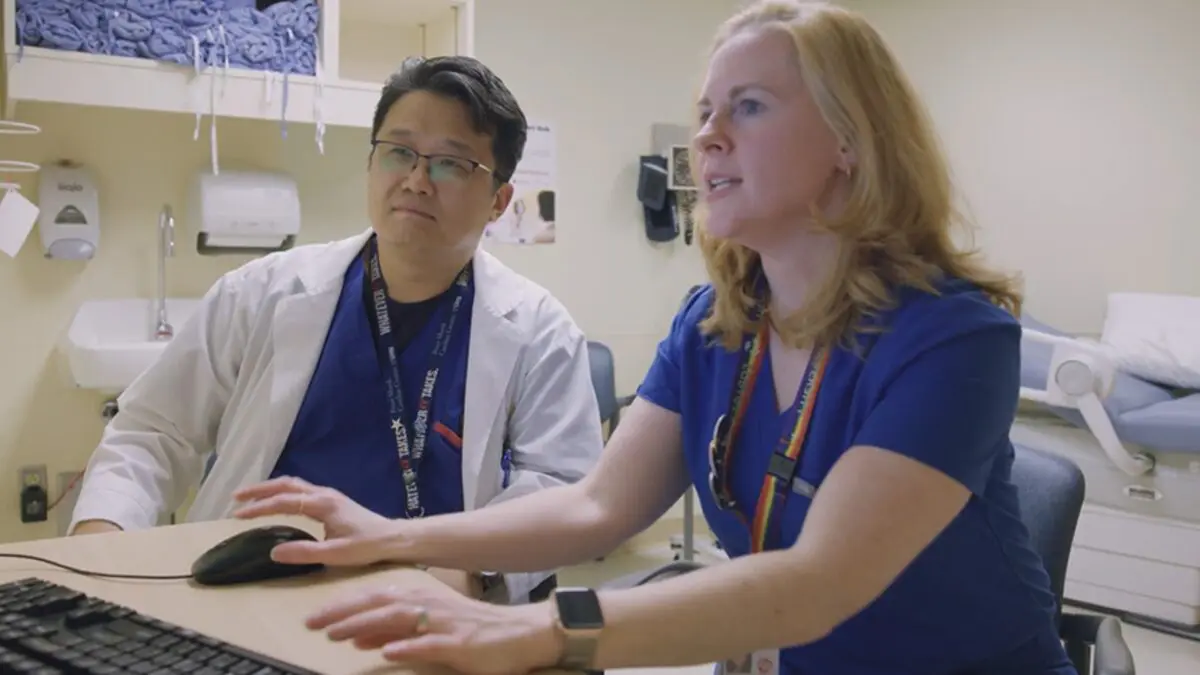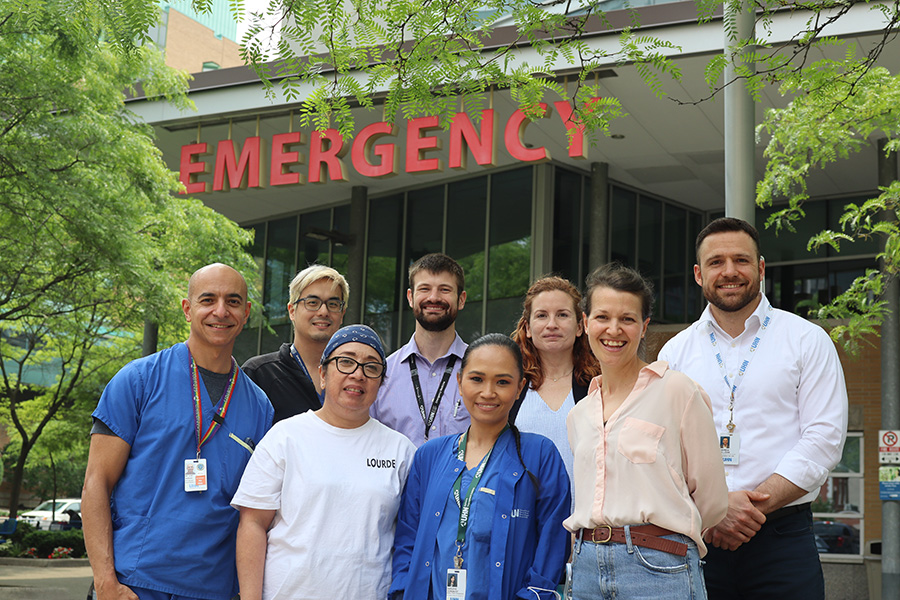
An initiative aimed at making UHN’s Emergency Department (ED) run more effectively has come up with several methods to increase operational efficiency and decrease wait times at Toronto General and Toronto Western hospitals.
About 60 staff participated in the first phase of the Flow, Access, Safety Throughout in the ED (Fast-ED) Initiative, where frontline health care workers from all disciplines in the ED worked together to improve flow and “time to triage” in two of the busiest sites at UHN.
“Fast-ED is about looking at what’s adding value versus what isn’t,” says Dr. Sam Sabbah, Medical Director of Emergency Medicine at UHN.
Patient flow is a critical component in ensuring the ED operates smoothly and involves a variety of medical care professionals, resources and systems to deliver effective care.
Included professions from across the ED
“Improving flow is about applying a critical lens and asking which tasks can be automated, delegated, or eliminated to reduce waste and deliver the most value to our patients and staff,” says Dr. Sabbah.
The first two days of Fast-ED included structured discussions about what was working well and what needed improvement. The rest of the week was spent implementing change ideas developed in these meetings.
To implement change, staff from professions across the ED – including nurses, personal support workers (PSWs), physicians, physician assistants, nurse practitioners and patient care coordinators – participated in brainstorming sessions to find ways to reduce triage process time, improve patient safety, and enhance the patient and provider experience within the ED.
The diversity of the group was crucial for fresh and “outside the box” thinking to come forward.
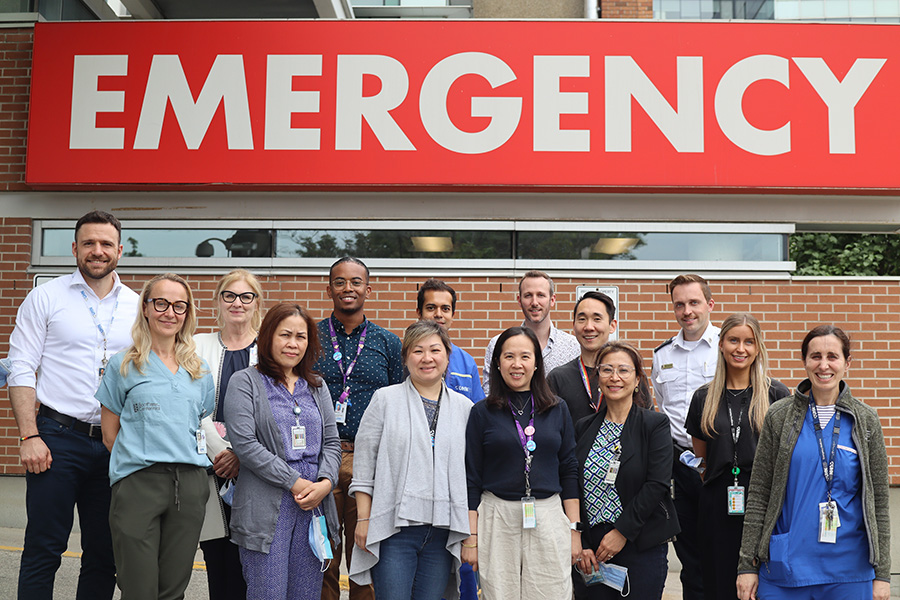
One idea was cleaning out unnecessary clutter such as printers, paper and other supplies in the photocopy room at TGH – made redundant by the implementation of UHN’s health information system powered by Epic – and transforming the space into a patient exam and treatment room.
“The space was being wasted, so we thought why not turn the room into a patient care area?” says Michael De Wit, ED Manager at TGH.
The team cleaned out the room and transformed the space in just half a day so that it could be used more effectively for blood and specimen collection.
“This new and enhanced space is a functionality that the team plans to keep moving forward,” Michael says.
Another change idea that was implemented was leveraging PSWs to help with triage by delegating tasks previously performed by nurses such as bringing patients into rooms, helping them change into gowns, and checking that they have the appropriate patient identification and allergy bands.
“I’m excited to be able to contribute more to my team and ensure that our patients remain safe,” says Lourdes Abaday, a PSW at TGH, who was part of the brainstorming group during the workshop and a key member of the team implementing suggested changes within the PSW profession on the frontlines.
“The beauty of this initiative is that it empowers people who do the work to create solutions that will make their work more effective and enjoyable,” says Dr. Sabbah. “People’s voices are being heard, which encourages them to bring forth more suggestions on how to make improvements in the future.”
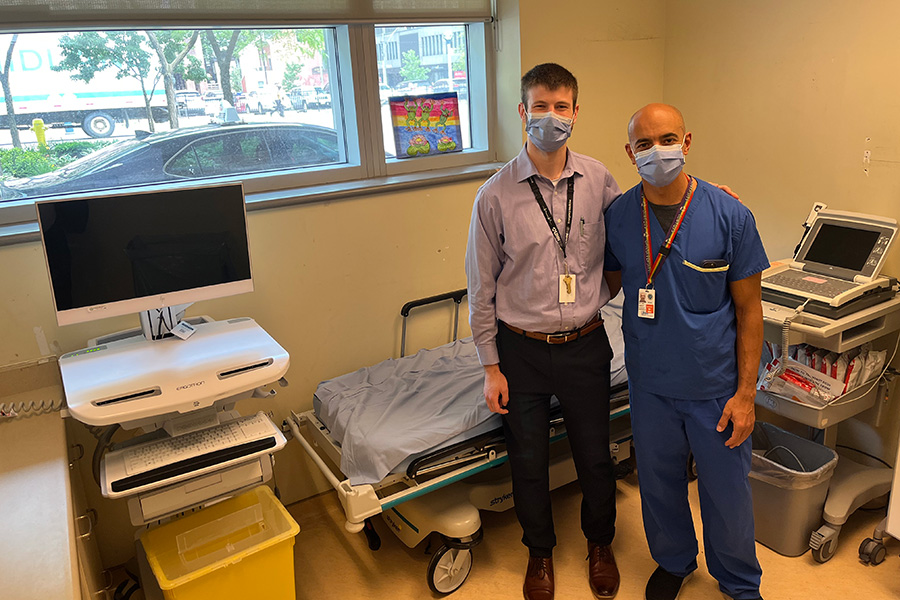
A few minutes make a big difference
Triaging patients is a key step in the ED flow process – prioritizing cases based on severity.
The current state of “time to triage” in UHN’s ED is 18 to 20 minutes on average. When a patient comes into the ED, they screen at the front desk, visit the triage nurse, and then register, with additional minutes of waiting added in between each step.
One of the priorities of Fast-ED was to trial combining the screening and registration processes at the same time, resulting in fewer points of contact between the patients and staff.
“With this change idea, patients no longer need to stand up, sit down, and take their health card out multiple times, all of which increases the average time of a patient’s visit in our Emergency Department,” Michael says.
Taking the process from three steps – screening, triaging and registering – to just two – screening and registering combined – can save a significant amount of time in the ED flow process.
“Shaving a minute off here and minute off there eventually adds up to hundreds of thousands of minutes over time,” says Dr. Sabbah.
At TWH, the team also reorganized unclear signage causing issues with wayfinding at the ED entrance.
“Staff have said that it’s impacted their work in a positive way by simplifying their workflow,” says Anna Nowacki, Emergency physician at TWH. “After implementing new clear, universal signage, patients are experiencing less uncertainty about navigating their way through entrance to registration.”
Second phase of Fast-ED set for September
Another area that was particularly improved was the role of the triage nurse. They can now start treatment right away, as patients are immediately given a wristband upon registering which allows to do things such bloodwork and electrocardiograms earlier in the process.
“The wristbands also result in a safer process for patients, because staff are able to identify who is being registered right away, rather than confusing two people in the waiting room with the same name,” says Dr. Nowacki.
“It was inspiring to see front-line ED staff motivated and excited to make changes that were meaningful to them,” says Sabrina Bennett, Clinical Director of UHN General Internal Medicine, ED and the Family Health Team.
“The positive impact of these changes ensures the success of our future FAST-ED events where we anticipate looking at other time points in an ED patient’s journey throughout the department.”
The second phase of the Fast-ED Initiative is set for September, with goals to decrease time to discharge, as well as time for diagnostic imaging of lower acuity patients.

